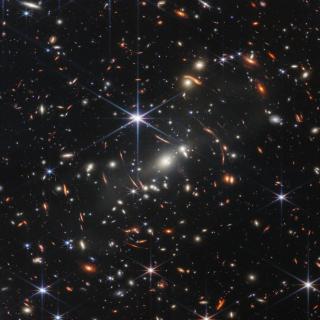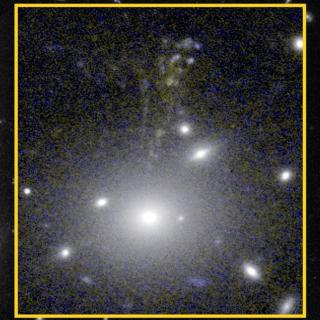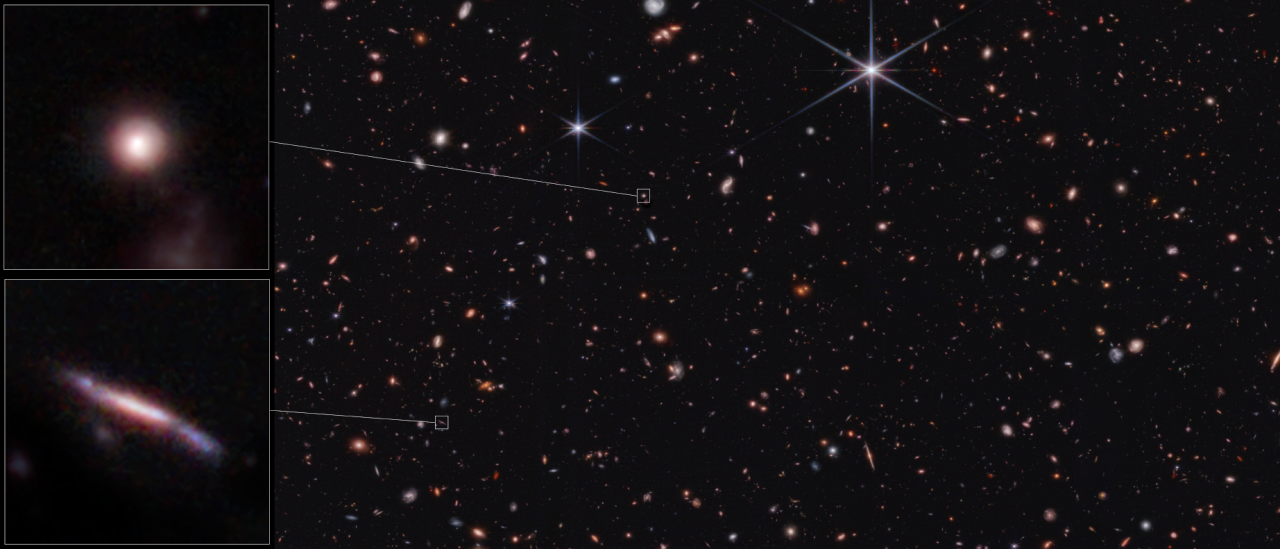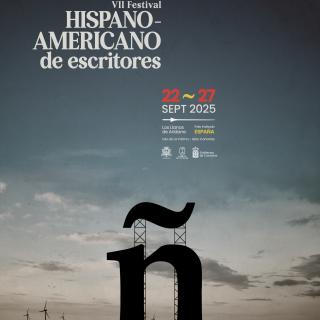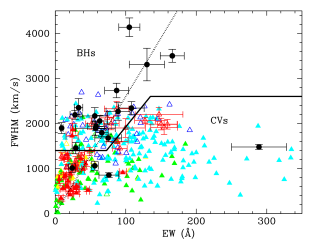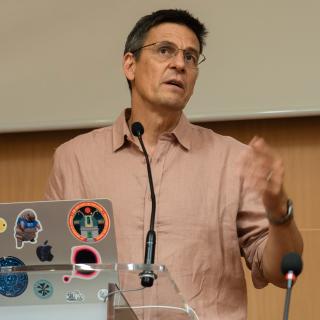Thanks to images obtained by the James Webb Telescope (JWST), an international scientific team in which the Instituto de Astrofísica de Canarias (IAC) participates has been able to verify that galaxies in the early universe are usually flat and elongated, and not round or spiral like the nearest galaxies.
International research has found, by analysing high-resolution, infrared images of the JWST, that flattened oval disc and tube-shaped galaxies were much more common when the universe was between 600 million and 6 billion years old. In contrast, the nearest galaxies have clearly defined spiral and elliptical shapes with star-studded arms.
“Roughly 50 to 80% of the galaxies we studied appear to be flattened in two dimensions,” explained lead author Viraj Pandya, a NASA Hubble Fellow at Columbia University in New York. “Galaxies that look like pool noodles or surfboards seem to be very common in the early universe, which is surprising, since they are uncommon nearby.”
According to the study, these distant galaxies are also much less massive than nearby spiral and elliptical galaxies, as they had less time to grow in the early universe. Thanks to the data obtained, the scientific team has been able to go back billions of years in time to estimate the shape and mass of the Milky Way. “Our best guess is that it might have appeared more like a surfboard,” said co-author Haowen Zhang, a PhD candidate at the University of Arizona in Tucson.
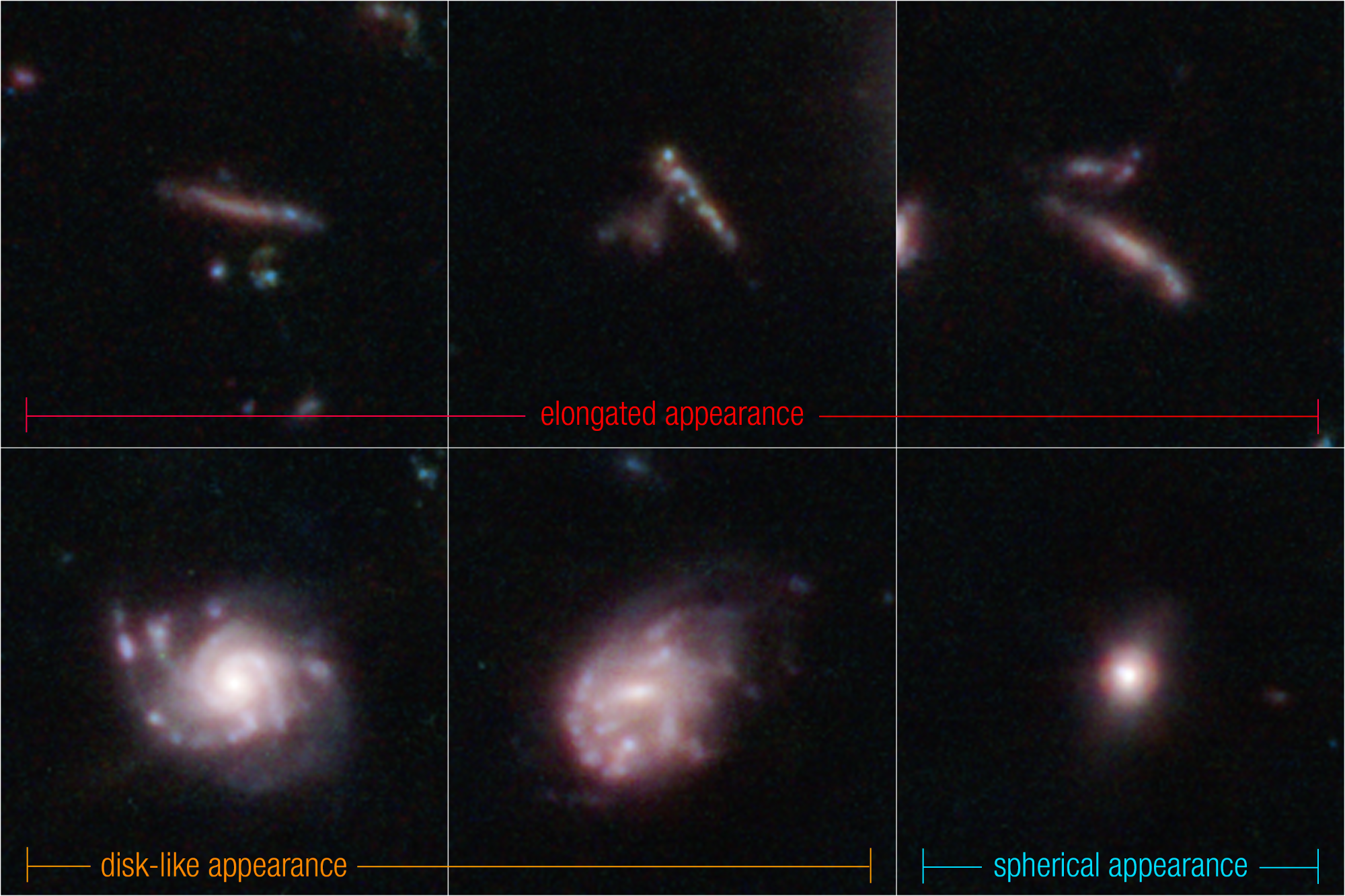
The team has focused on the JWST image catalogue known as the Cosmic Evolution Early Release Science (CEERS) Survey. However, analysis of previous observations made by the Hubble Space Telescope, such as its first "deep field" in 1995 and the Cosmic Assembly Near-infrared Deep Extragalactic Legacy Survey developed between 2010 and 2013, has also played a role.
“Hubble has long showed an excess of elongated galaxies,” explained co-author Marc Huertas-Company, a faculty research scientist at the Institute of Astrophysics on the Canary Islands. “Webb confirmed that Hubble didn’t miss any additional features in the galaxies they both observed. Plus, Webb showed us many more distant galaxies with similar shapes, all in great detail.”
For the team, this discovery is only a first result. The scientific community will need a larger sample of JWST observations to further refine the precise properties and locations of distant galaxies, which will also allow for fine-tuning and updating models of how the three-dimensional geometries of galaxies evolve over cosmic time.
Article: Viraj Pandya, Haowen Zhang, Marc Huertas-Company et al. “Galaxies Going Bananas: Inferring the 3D Geometry of High-Redshift Galaxies with JWST-CEERS”. DOI: https://doi.org/10.48550/arXiv.2310.15232
Contact at the IAC:
Marc Huertas Company, mhuertas [at] iac.es (mhuertas[at]iac[dot]es)
